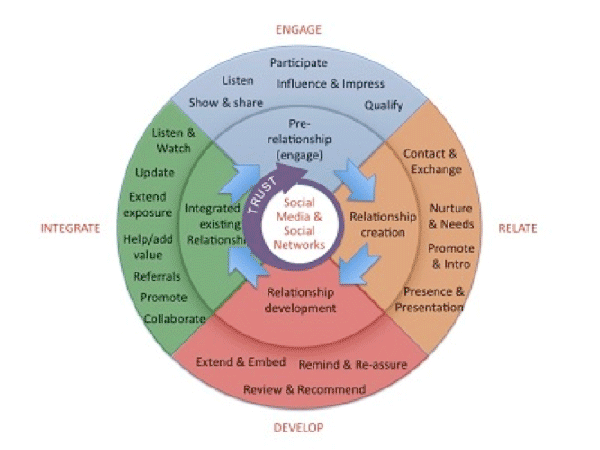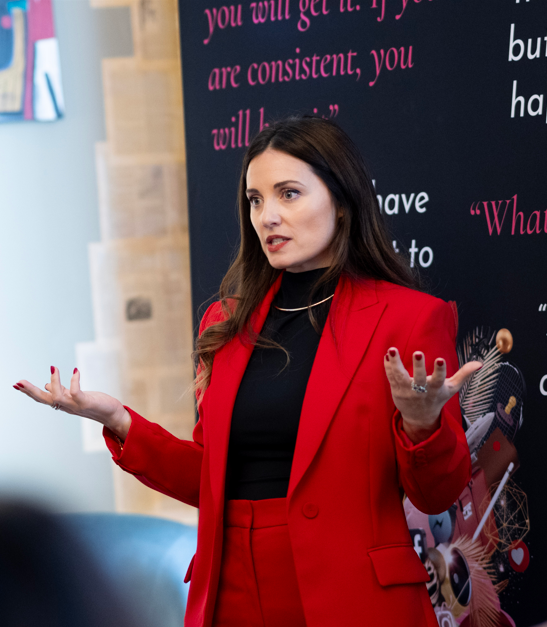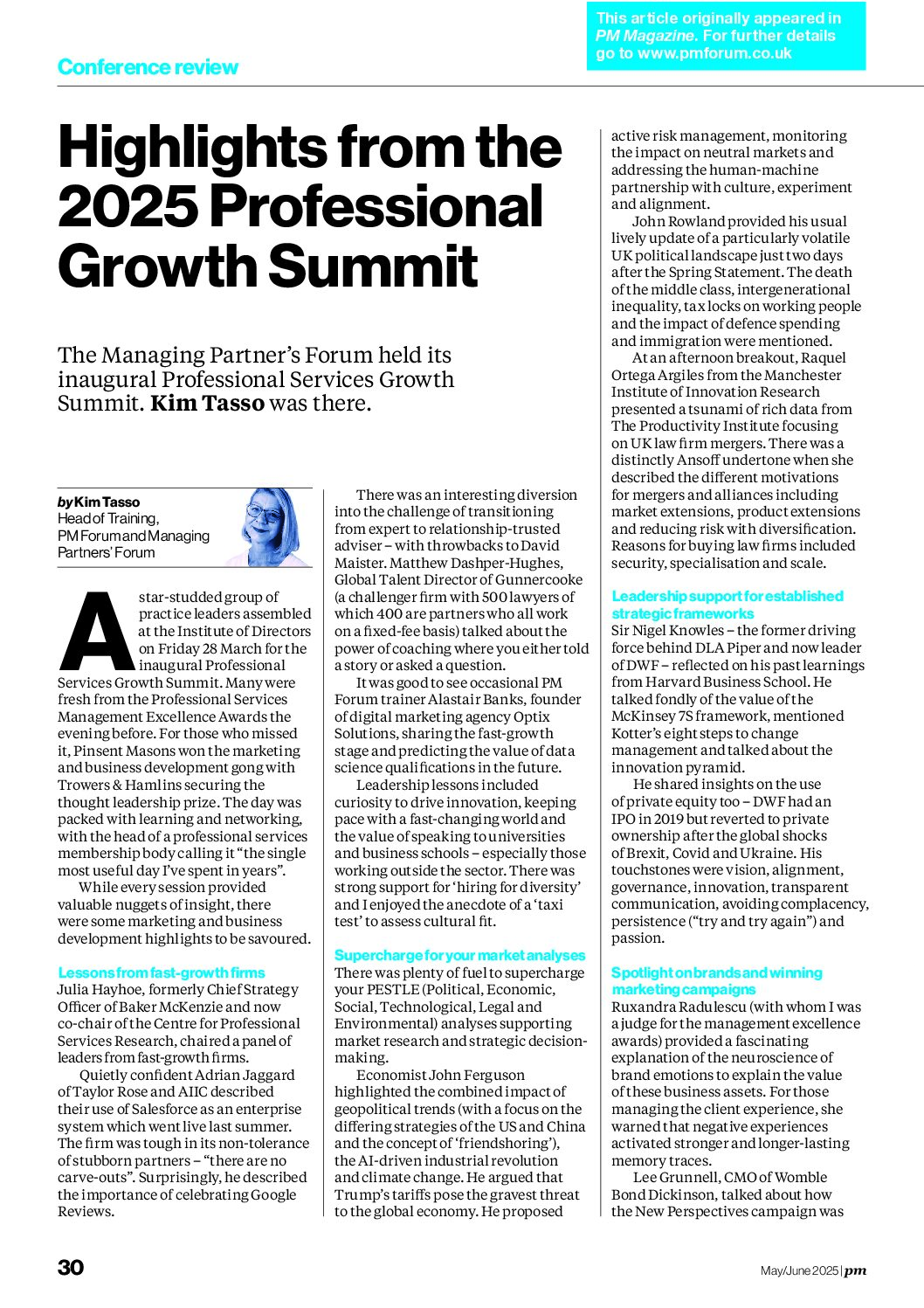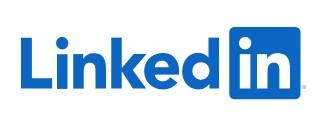
I am still incredulous at all the hysteria and cynicism when it comes to the subject of social media and the professions. And I am more than a little bit fed up dealing with the confusion that is caused by it amongst ordinary professionals who are just trying to run their practices, keep their clients happy and generate new business.
For Goodness sake, there are over 1.5m lawyers on LinkedIn – are the critics saying that they are all stupid? And Twitter has more than 100m active users – they can’t all be time wasters or celebrities or dubious “experts” selling their wares. And Facebook (although I don’t advocate it for business use) is now larger than the Internet was in 2004. Youtube is the second largest search engine after Google.
So once again I am going to explain WHY social media IS for lawyers, accountants and surveyors. To show how it might be beneficial to those who decide to use it as an integrated part of their marketing, selling and relationship development activities. And I will repeat that social media isn’t a panacea – there ARE some markets where its adoption rate is still low. However, dismissing social media without exploring its pros and cons is a bit like dismissing the Internet. Yes, really.
Be better informed
There is so much information flying around you simply don’t have the time to keep up with it all. Unless you use social media in a smart way to improve your market listening. For example:
- I explained the other day to some lawyers that RSS feeds enables them to have all the updates from the blogs that might be of interest to them in one place. This saves them remembering to go back to each blog to check for updates.
- By following a company on LinkedIn you can be alerted to when new members of that organisation join (really helpful if it happens to be a major client).
- By joining the relevant groups on LinkedIn you can scan discussions of interest to hear about the latest thinking and different opinions on a subject.
- Creating Twitter lists (on my RedStarKim account there are two lists of lawyers, a list of accountants, a list for property, a list for West London and so on) means that you can quickly scan numerous 140 character messages and pick up on the key news and trends – reading the relevant links as required. It’s time efficient.
Reach a wider audience
Professionals often invest a lot of time preparing articles, bulletins and updates relating to developments in their field. This is a vital service for their existing clients. No doubt they will have a database of clients, referrers, prospects and contacts to whom this information is emailed. All well and good.
But by building up social media networks they can distribute this material to additional and new networks. So, if you have been a modest user of social media, links to your articles, blogs and other information can also be presented in a non-intrusive way to your connections on LinkedIn and Twitter and other social media. And you can also “recycle” relevant articles from your colleagues and clients as well while you are at it.
And if the material is suitable for public access, there’s no reason why important presentations and PDFs can’t be placed on your LinkedIn profile so that they are easy for people to find and download. It’s a simple way to demonstrate your expertise and another good way to recycle material.
Appear on your client and contacts’ radar more often
Professionals can be reluctant to produce and distribute information regularly to their clients and contacts despite the regular (sometimes frustrated) urgings of their marketing and business development people. Many professionals will produce quarterly newsletters or bulletins which might combine information from a number of their colleagues, addressing a number of issues. But the process at some firms for producing these materials can be tortuous. Meanwhile, your clients are listening to others in the market.
So by posting up a simple status update on your LinkedIn profile each week – perhaps with a link to a short, informal blog on something that you noticed that is important or relevant to your field – means that your presence is automatically flagged up on the radar of all those to whom you are connected.
The value of regularity of (relevant) contact is not disputed. And neither is the provision of “intellectual gifts” to your clients – showing that you are thinking of them and sending information that they may find of value.
Improve your firm’s performance in the search engines
The two main drivers of effective search engine optimisation (SEO – the process whereby your web site appears near the top of the results for relevant searches) are a) good quality and up to date content and b) high quality inbound links.
Social media sites are considered high quality links – so by having a good number of your professional staff on social media sites with links back to your web site (and to their specialist pages) will help search engine optimisation.
Be easily found
The number of times that people will check on social media networks BEFORE they go to the firm’s web site should not surprise people. You want clients, referrers and potential clients to be able to find you as easily as possible.
Social media sites fare well with the search engines. Therefore you should have at least an up to date profile on the most popular social media sites (generally considered to be LinkedIn and Twitter for the professions).
And for those who are interested in international work, LinkedIn remains a popular tool for lawyers, accountants and property professionals seeking suitable contacts in other jurisdictions. Are you happy to be omitted from their searches?
Be better connected
You may struggle with your firm’s central database or CRM. You may have long lists of emails kept in Outlook Office or in Excel spreadsheets. So it might be easier for some to concentrate on keeping a manageable set of their most important connections within one social media network – like LinkedIn.
Most social media networks will make suggestions about people that you may know (so you can reconnect with people who you have known or worked with in the past) or who you may want to know because they have similar interests. It’s a simple way to expand your network.
There are many examples of people connecting on social media networks and developing their relationship before meeting someone IRL (in real life). And vice versa.
Use dead time
Show me a professional who isn’t pressed for time. But as social media networks are available on mobile devices then dead time (e.g. like being in a taxi, stuck in traffic or waiting for meetings) can be used productively to check on the latest news from your contact base and your industry and even to initiate or continue an on-line dialogue. Privately or publicly.
Give and receive recommendations
We all place more credibility on third party references. LinkedIn is one of those social media sites where it is easy to request and provide references. And clients and contacts will value you taking the time to provide relevant recommendations of the work that they do (bearing in mind confidentiality issues). And yes, you have the chance to review and edit recommendations before they appear.
Network without leaving home
If you have young children to look after then it may not be possible to get to as many face-to-face networking events as you might need or like. Especially as many of them are organised at dawn or dusk. Using social media in the evenings and/or at weekends provides a way for you to remain active amongst your networks without compromising childcare arrangements and/or family life.
Create and communicate with a niche
The value of niche marketing is undisputed. And with social media it is much easier to identify and join specialist groups and communities so that you become a part of – and possibly an expert within – that niche. There is plenty of evidence of people generating a high profile and a strong following within a niche through the smart use of a niche blog and the creation of a focused on-line community with LinkedIn.
A low risk follow up option
Professionals spend a lot of time networking at formal and informal events – trying to build their base of contacts. Yet many of them forget that making contact is only the start and that these relationships need to be nurtured and developed.
One of the first and easy ways to follow up after making face to face contact is to connect with people through social networks. It means that you then have a chance to see what sorts of things that they are interested in before you decide how best to promote further one-to-one contact.
Join the conversation
At the end of the day, social media is about conversations. Sometimes those conversations are about important, business related topics. Sometimes they are about what’s on the television, a sports result or some happy family activity. Relationships are the sum of many conversations. Each conversation reveals new information and allows the bond to grow stronger. How long would it take in a normal business face-to-face conversations to learn someone’s favourite song? Or favourite food? Social media conversations are about sharing – and that must be something we wish to do with our clients. Surely we should welcome the opportunity to engage in more conversations with our clients and prospects – whether this is in the on-line environment or face-to-face?
Prepare yourself
Yes, you need to know what you are doing in social media – but it isn’t brain surgery. So either get some basic training or learn from a colleague.
Start small – dip your toe in and take a look around before plunging in.
Be sensible – yes, there are potential risks to your firm’s and your own reputation so check out your firm’s guidelines and policies.
Make friends – because that is what social media allows you to do – with both existing contacts and those that you meet via the on-line world.
I’ve written other blogs about social media in the past, here are the main links:
http://kimtasso.com/social-media-reputation-management-and-employment-law
http://kimtasso.com/search-engine-optimisation-in-a-nutshell
http://kimtasso.com/delegates-views-of-the-new-course-inbound-marketing-and-social-media
http://kimtasso.com/case-study-haysmacintyre-accountants-and-social-media
http://kimtasso.com/accountancy-age-best-practice-conference-june-2011
http://kimtasso.com/smart-social-media-for-business-conference-highlights
http://kimtasso.com/part-two-how-introducing-twitter-to-lawyers-accountants-and-surveyors









